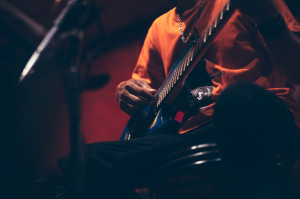In the smoky, dimly lit juke joints of the American South during the mid-20th century, two distinct musical genres were born – rhythm and blues and rockabilly. While seemingly worlds apart, these genres shared a unique and intricate relationship that significantly impacted the trajectory of both musical styles and shaped the burgeoning rockabilly music scene. Let’s dive into the fascinating interplay between rhythm and blues and rockabilly, exploring how the fusion of these two genres ignited a revolution in the musical landscape.
and rockabilly. While seemingly worlds apart, these genres shared a unique and intricate relationship that significantly impacted the trajectory of both musical styles and shaped the burgeoning rockabilly music scene. Let’s dive into the fascinating interplay between rhythm and blues and rockabilly, exploring how the fusion of these two genres ignited a revolution in the musical landscape.
The birth of rhythm and blues and rockabilly
Rhythm and blues emerged from the rich tapestry of African-American musical traditions, encompassing elements of gospel, jazz, and blues. Artists like Louis Jordan and Big Joe Turner laid the foundation for this genre with their catchy rhythms and soulful vocals, creating an irresistible musical groove that resonated deeply with audiences. Concurrently, in the Southern backwoods, rockabilly was taking shape as a blend of country, blues, and hillbilly music, fueled by the electrifying energy of pioneers like Carl Perkins and Jerry Lee Lewis.
Rhythm and blue’s impact on rockabilly
The cross-pollination of rhythm and blues and rockabilly was nothing short of transformative. The infectious rhythms and emotional intensity of rhythm and blues infiltrated the rockabilly sound, infusing it with newfound vigor. Early rockabilly artists fused rhythm and blues’ exuberance and rockabilly’s rawness. Even rock icons like Elvis Presley can trace their hip gyrations and electrifying stage presence back to rhythm and blues performers like Jackie Wilson, a testament to the genre’s profound impact.
Rhythm and blues guitar work, characterized by intricate chord progressions and soulful solos, also found its way into the rockabilly playbook. These elements elevated rockabilly’s guitar playing to new heights, creating a distinctive sound that resonated with audiences worldwide.
Lyrically, rhythm and blues’s exploration of love, heartache, and societal challenges resonated deeply with rockabilly artists. Songs like “Blue Suede Shoes” by Carl Perkins and “Great Balls of Fire” by Jerry Lee Lewis drew inspiration from rhythm and blues’ emotional depth, forging a strong connection between the two genres. Indeed, many rockabilly artists re-recorded early rhythm and blues songs. For instance, Johnny Burnette’s “Train Kept A-Rollin’” was originally a rhythm and blues song. This fusion not only expanded rockabilly’s thematic scope but also attracted a broader audience, including those who had been captivated by rhythm and blues’ powerful narratives.
The rockabilly scene transformed
The fusion of rhythm and blues and rockabilly breathed new life into the rockabilly music scene, fostering a dynamic and diverse community of artists and fans. As rhythm and blues-infused rockabilly tracks began to dominate the airwaves, dance floors across the country ignited with frenetic energy. The vibrant live performances of artists like Little Richard and Chuck Berry drew fans from all walks of life, creating an inclusive and electric atmosphere that transcended racial and cultural boundaries.
Moreover, the symbiotic relationship between rhythm and blues and rockabilly led to unprecedented collaborations between artists from both genres. Chuck Berry’s famous collaboration with Bo Diddley on the song “Bo Diddley” exemplified the mutual respect and admiration between rhythm and blues and rockabilly artists. These collaborations not only enriched the sonic landscape but also helped bridge the gap between different musical communities.
The intertwined evolution of rhythm and blues and rockabilly stands as a testament to the power of musical fusion. Rhythm and blues’ infectious rhythms, soulful vocals, and intricate guitar work breathed new life into the rockabilly genre, propelling it to new heights of popularity and creativity. The rockabilly music scene, once rooted in the rural backwoods, transformed into a vibrant, culturally rich movement that captivated audiences far and wide.
The legacy of this fusion continues to reverberate through contemporary music, with artists from various genres paying homage to the rhythm and blues-infused rockabilly sound. As we celebrate the intertwined history of these two genres, we are reminded of the enduring impact they have had on the musical landscape – a testament to the undeniable power of rhythm, blues, and rockabilly.
